

Dual Enrollment

Dual enrollment classes at Delta College are great because they can count toward high school graduation and college credit. Students can earn college credits that may be applied toward an associate’s degree or transferred easily to a Michigan university of their choice.
Another plus, dual classes are usually paid for by the high school which gives students the potential to finish college early and pay less overall.
Dual enrollment also prepares students for college-level academics and broadens their horizons.



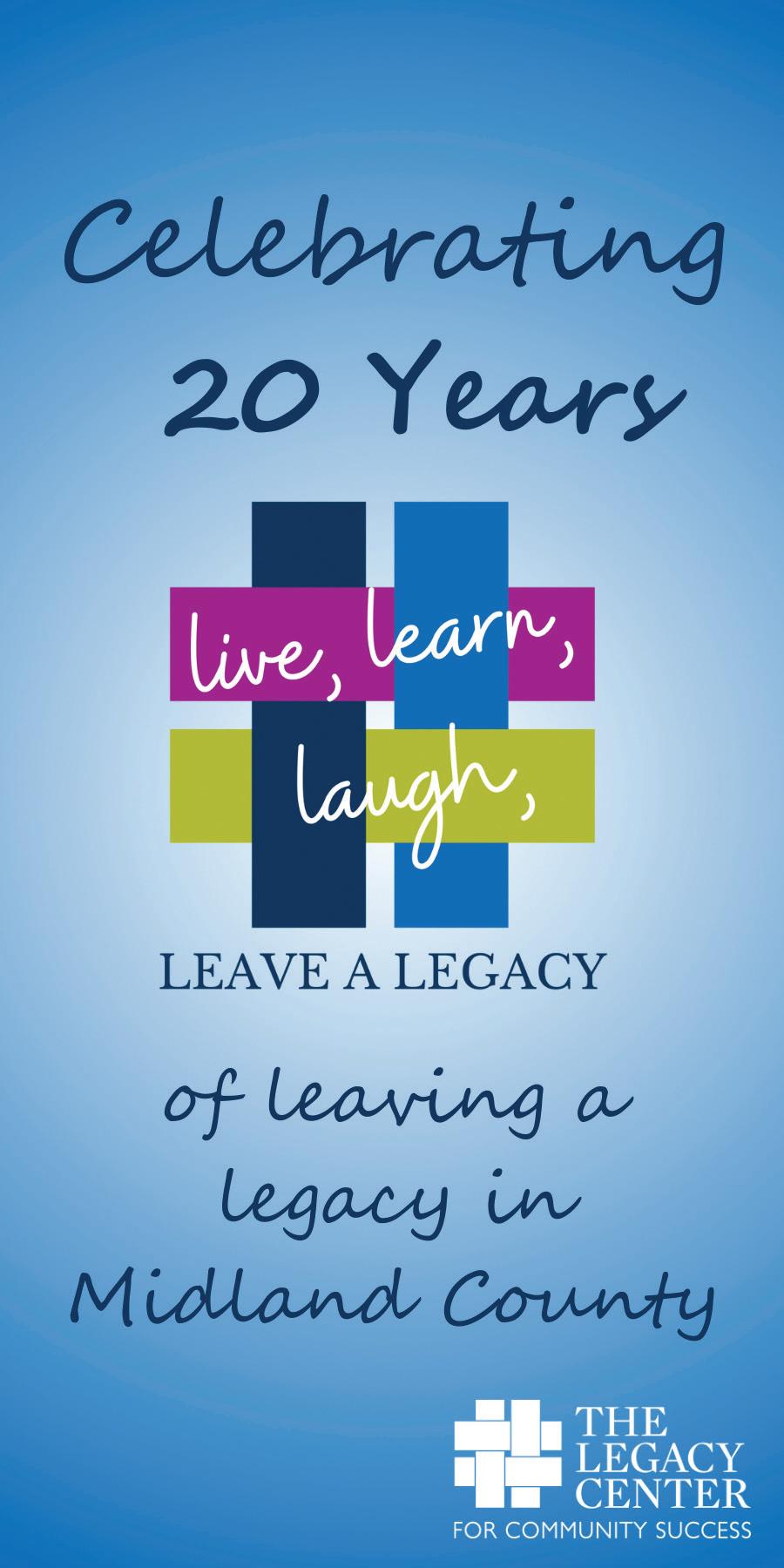
The Legacy Center changes the trajectory of people’s lives as we help them reach their full potential. We help our neighbors build the reading and language skills they need to succeed. We equip young people to make responsible choices. We are a local collaborative partner committed to increasing the impact of agencies in Midland County.
Follow The Legacy Center www.tlc4cs.org www.facebook.com/tlc4cs
Director FROM THE I

t’s back to school time once again. As always, the magazine committee was committed to coming up with content to help parents navigate this exciting and anxious time of year.
More and more research is showing that positive childhood experiences can make a powerful impact for a child and can reduce adverse effects of negative childhood experiences.
We’ve been assembling this magazine for 11 years, and I’m glad to say we try to focus on the positive by highlighting youth in our Faces in the Crowd as well as showing positive things happening in the 40 Developmental Assets section. One of the most important supports for a child is a relationship with a trusting adult. If you have some time, please consider looking into opportunities to help out at school, become a volunteer tutor with The Legacy Center or become a Big Brother or Big Sister. It truly does make a difference!
We’re happy to have an article in this issue from Dr. Goldes on addressing dermatological issues with youth. It can be a game changer for their self-esteem, which can affect their success in school.
A therapist from Intermountain was gracious enough to share her time and expertise to write an article on the importance of making connections with your child. She gives some easy but effective ways to do that, and they can be built into your day without having to add extra things to do.
Officer Gomez has some great advice in our Q&A section on technology and kids that we might not all know about. It can be scary, but we can’t stop something if we don’t know about it. If you’re on Facebook, you can follow him and get lots of great additional information.
We hope you and your child have a fun, safe and productive year!
THE LEGACY CENTER FOR COMMUNITY SUCCESS
Kathryn Tate, President/CEO (989) 496-1425 ktate@tlc4cs.org 2417 Abbott Road, Midland, MI 48642
WANT TO GO GREEN?
We’re creating an email distribution option. Email tlc4cs@tlc4cs.org and provide your physical address and your email address to switch to electronic delivery.
KATHRYN TATE
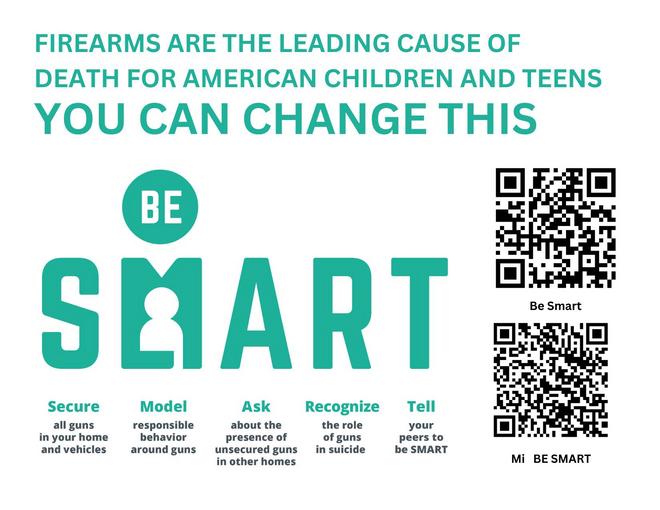





Secure gun storage is essential for the safety of young people, our schools, and our communities Use the QR codes above or visit Besmartforkids org to learn more about the secure gun storage law in Michigan and how to Be Smart for Kids





Sunday Worship
9 & 10:45 a.m. in-Person & Live Stream
Sunday Youth Groups
12-2 p.m. Middle School 4-6 p.m. High School
Music & Choirs
Bells & Chimes, voice, & Praise Band
Wednesday Lighthouse

Dr.
Dr.



CONFESSIONS FROM THE KITCHEN TABLE
More Than Skin Deep: How Dermatologic Conditions Impact Teens Inside and Out
by DR. JEFFRY GOLDES, Board-Certified Dermatologist, Associated Dermatology & Skin Cancer Clinic, Helena, Montana
With a new school year starting, parents are always looking for ways to help their child(ren) have a successful year. Outside of new school supplies to help them start off on the right foot, addressing issues that may be increasing their anxiety can help even more. Any of us who suffered from acne or other skin disorders, know exactly how embarrassing it can be. It’s not like they can wear a ski mask to school, so there’s not a way to hide anything that they’re self-conscious about. Unfortunately, teens put a lot of stock in how they look and what their peers think about them, so giving them the tools to help them feel better about themselves can go a long way towards a more positive experience at school.
We reached out to a dermatologist for advice on supporting parents to help youth maneuver the potential embarrassment of skin issues by addressing the root cause.
When people think about teenagers and skin, acne is usually the first thing that comes to mind. While acne is extremely common and can certainly affect self-confidence, it’s far from the only dermatologic issue young people face. Conditions like eczema (atopic dermatitis) and alopecia areata (patchy hair loss) can be especially challenging—not just physically, but emotionally and socially, too.
As a dermatologist, I’ve seen firsthand how skin disorders can impact a student’s daily life, confidence, and even school performance. Here’s what parents and teens should know:
ACNE: MORE THAN A RITE OF PASSAGE
Acne can range from mild blackheads to severe, painful cysts. Beyond the physical discomfort, it often triggers anxiety, embarrassment, and social withdrawal, especially during the already-vulnerable middle and high school years. The good news is that effective treatments exist— from topical creams to prescription medications. Early intervention can prevent long-term scarring and help protect your child’s self-esteem.
What Parents Can Do: Encourage open conversations about how your child is feeling about their skin. Avoid minimizing their concerns, and seek professional guidance when over-the-counter products aren’t enough.
ALOPECIA AREATA: WHEN HAIR LOSS FEELS LIKE IDENTITY LOSS
Hair plays a big role in self-image. Alopecia areata, an autoimmune
condition that causes patchy hair loss, can be devastating for teens. It often appears suddenly, sometimes triggered by stress or illness, and can affect the scalp, eyebrows, or eyelashes.
Although it’s not contagious and doesn’t cause physical pain, the emotional toll can be heavy. Students may feel isolated or worry about being teased.
What Parents Can Do: If you notice unusual hair loss, don’t wait. A dermatologist can evaluate the cause and discuss treatment options, including topical medications, steroid injections, and newer therapies. Just as importantly, be a supportive listener and advocate for your teen at school if needed.
ECZEMA/ATOPIC DERMATITIS: MORE THAN DRY SKIN
Atopic dermatitis often begins in childhood, but many teens continue to struggle with it. It causes itchy, inflamed, sometimes painful skin, often on the arms, legs, or neck. It can disrupt sleep, focus, and confidence— especially if visible during gym class or school events.
What Parents Can Do: Help teens build a daily skincare routine, including moisturizers and prescribed treatments if needed. Avoiding triggers—like stress, fragrances, or certain fabrics—can also help. Don’t underestimate the frustration and exhaustion eczema can cause.
THE EMOTIONAL SIDE OF SKIN CONDITIONS
Many teens feel like their skin condition sets them apart in the worst possible way. They may avoid pictures, skip events, or feel like they don’t fit in. Mental health and skin health are closely connected, and dermatology care should address both.
Encouraging teens to talk to a counselor, participate in support groups, or simply feel heard at home can be just as healing as medication.
FINAL THOUGHTS
Dermatologic conditions during adolescence are common—but that doesn’t mean they’re easy. The physical discomfort, combined with the social and emotional stress, can affect every area of a teen’s life. The earlier we recognize this, the better we can support them.
If your teen is struggling with any skin or hair condition, don’t wait to seek help. Compassionate, expert care is available—and it can make a world of difference. ■
SUCCESS Setting the Year

SUCCESS Year for
by KATIE HARLOW, LCSW

Now that summer is officially over, many parents find themselves settling into the structure and dependability of the school year while also being unsure of how to help kids continue to transition smoothly back to the school year routine. Kids also experience a mix of emotions and can be caught in a state of uncertainty during this time, needing the comfort of structure yet struggling to adjust to the day-to-day routine. Children with academic or mental health struggles such as anxiety related to academic performance or peer relationships may even dread returning to the environment that increases their discomfort.
We know that structure and routine are important because they bring a sense of safety and dependability to our lives and solve a common fear: that of the unknown.
Developmentally appropriate structure allows children to learn to constructively regulate and manage their emotions and behaviors. Which is to say that structure should grow and change as children grow and change to best support their development. A return to the school year also means a decrease in freedom that is often given during the summer and an increase in rules, expectations, and adult control over children’s lives. Teens especially tend to constantly be on the prowl for more freedom, and more opportunities to control their lives and environments. This time of life looks different child by child and family by family.
In an ideal world, changes such as these would happen seamlessly, but here in the real world we know it often doesn’t. As much as people crave the dependability of routine, we tend to also be resistant to change, which can make for some frustrating and stressful mornings trying to get kids out the door and to school on time. Feeling this stress might lead to yelling at our kids or constantly prompting them to “Hurry up!” This creates a negative start to the day as everyone leaves the house feeling hurried and frustrated, plus these kinds of mornings usually follow up with a nice side of parental guilt. Rather than starting mornings off this way, wouldn’t it be nice for both parents and children to start the day calm, organized and on time? Sound too good to be true? There is no magic wand to guarantee there will never be another rushed or frustrating morning, but we can help kids start their school year off successfully by identifying where they need help implementing structure and routine, and by preparing them for the changes.
Begin by thinking about each child and what is usually the hang up for getting them out the door smoothly each morning. Are they slow to wake up, so they end up running late each day, or do they run around the house trying to gather their belongings or practice gear so they are ready for the day? Identifying where they struggle to be prepared will help support their growth and development in becoming more independent and having more successful mornings.
continued on page 9


If a child struggles to wake up and get going in the morning, try setting multiple alarms so that he or she is able to gradually wake up with the final alarm giving a cushion of time to get ready and out the door on time. Include them in this plan so they are able to participate in identifying what will work for them and learn these skills to use as they grow older.
If they never seem to know where their clothes, shoes, homework, lunch, and other items are in the mornings then think about helping them learn organizational skills. This can be as simple as a younger child planning their clothing the night before, or more complex like teaching a teen to utilize technology in a beneficial manner, using the calendar features on their phone for example. These are all small tools to help children succeed. Teaching these skills in age-appropriate ways will help kids build independence and a mastery of new skills. This also builds feelings of competence in children and supports their growth and development towards increased independence as they grow older.
Beginning to build in routines such as getting backpacks ready or making lunches the night before will help mornings to feel less harried and rushed by eliminating the inevitable search of the house for a lost shoe or homework folder. By gradually and consistently building in these tasks or increasing their complexity, they will become routine, which will greatly reduce the potential for power struggles within parentchild relationships as these become just normal things that the family does each day. Have a discussion with the child about their feelings about getting back to school. If left unaddressed, negative emotions about school may come out as frustration or resistance to attending school in the
We
also need to consider our own emotions about the return to school. Do we have feelings of apprehension or worry for our child’s transition? If so remember that our children pick up on what we feel and how we manage our emotions and behaviors.
morning, and let’s be honest, that is the least likely time that we can stop what we are doing to help them process their emotions!
Having these conversations ahead of time might provide some valuable information about the child. Do they dislike their new teacher? Dread having to take a certain class or see a certain person each day? Scared to be away from mom or dad all day? This allows the opportunity to validate their feelings and potentially solve problems with them. This can also be a great time to normalize feelings of worry they may have; it is natural and healthy to have anxiety about new experiences. Creating connecting moments when emotions are not running high help to create a sense of safety for children, as well as reinforce that mom or dad is a positive support and can also be turned to when they are struggling. As the school year progresses, conversations can
naturally transition to talking about their day. Ask specific questions that can’t be answered with a blanket “fine” or “good” such as, “who did you eat lunch with today” or “what was the best and/or worst part of your day?”
We also need to consider our own emotions about the return to school. Do we have feelings of apprehension or worry for our child’s transition? If so remember that our children pick up on what we feel and how we manage our emotions and behaviors. Being able to acknowledge emotions such as anxiety or frustration and then regulate ourselves using healthy coping skills- such as deep breathing or taking a five-minute break shows kids that we can experience difficult emotions and be okay with them. These skills benefit both children and parents; it is vital that we are able to care for our own needs as well as teach these important skills to our children.
Finally, keep in mind that no matter how prepared things are, there will be days that don’t go as planned; days when the alarm doesn’t go off or someone is missing a shoe; days where patience is running thin and we yell or hurry the kids out the door, and everyone leaves the house looking like thunder clouds. No one is a perfect parent. View days like this as opportunities to teach children about repair. Sit down with them that evening and talk about what didn’t go well that morning and own up to our part in the breakdown. Teaching our children that we also make mistakes and we can take accountability for our mistakes is an extremely valuable lesson. Engaging them in problem solving and what can be done differently in the future by everyone in the house will create a sense of connection and reinforce that there is not an expectation for them to be perfect kids. ■
Check out who’s standing out in our community.
IS THERE SOMEONE YOU’D LIKE TO NOMINATE?
Please email tlc4cs@tlc4cs.org and tell us why this individual has stood out in your crowd.

Nora Lonsway NORTHEAST MIDDLE SCHOOL, 8TH GRADE
Nora brings creativity and kindness into everything she does, whether playing French horn in the Northeast Band, exploring her artistic side in Art Honors, or sharing her energy with the drama club. She leads quietly but powerfully, setting a great example for her peers with her positive attitude and steady commitment. Nora excels in her schoolwork and is an avid painter, choosing watercolor as her favorite medium. Nora’s caring nature and encouragement make others feel welcome, and she helps create a school community where everyone can shine.
Zach Ludwig NORTHEAST MIDDLE SCHOOL, 8TH GRADE
Zach is the youngest volunteer with Memorial Presbyterian Church’s audio-visual ministry, running the sound board and controlling cameras. Zach says he likes working with technology to help those with hearing impairments, to inform people about what’s happening at church, and to enable people to enjoy their worship experience. He participates in MPC’s youth group activities like neighborhood yardwork, Midtown Mission Garden, and Vacation Bible School. Recently, Zach volunteered at Midland’s Open Door by baking cookies, serving hot food, talking with diners, and washing dishes. Zach also plays football and sings in the choir at Northeast.

Jack Roberson BULLOCK CREEK HIGH SCHOOL, 10TH GRADE

In a world that often values self-interest, it’s inspiring to see someone like Jack Roberson, a member of APEX Youth Ministry at Merrill Wesleyan Church, go out of his way to serve others. Each year at CAMP 180 in Manton, MI, Jack voluntarily clears trays and wipes down tables at every meal, never seeking attention or praise, but he simply does it to help others. Jack consistently puts others first and generously shares his time. His actions show us that a servant’s heart can have a profound impact. Thank you for being an exemplary role model, Jack!
Jim Burkhart COLEMAN COMMUNITY SCHOOLS
Jim Burkhart, Band Director/Technology Director here in Coleman, recently received the Golden Apple Award from NBC TV25/FOX 66 for his outstanding work at Coleman Schools. They specifically recognized his work with students including the recent trip he organized and fundraised for that took high school band students to enjoy and sightsee in New York City and then perform on the Carnegie Hall Stage. Students noted it is his belief in them and his encouragement that moves them forward and has even guided one of the students to become a high school band director herself.

Coleman’s Regional Culinary Career Technical
Education Center

This year Coleman’s Regional Culinary Career Technical Education Center sent three students to the State SkillsUSA competition. This is the first year that Coleman Culinary at the Depot has participated in SkillsUSA. Two of the students gave culinary demonstrations. The third has been elected by her statewide peers and will serve as the SkillsUSA state secretary. Support from CTE Perkins and grants attained by Midland Public and Coleman Schools allowed her to attend the National SkillsUSA Conference in Atlanta, Georgia.



40 DEVELOPMENTAL ASSETS
40 Developmental Assets are essential qualities of life that help young people thrive, do well in school, and avoid risky behavior.
Youth Connections utilizes the 40 Developmental Assets Framework to guide the work we do in promoting positive youth development. The 40 Assets model was developed by the Minneapolis-based Search Institute based on extensive research. Just as we are coached to diversify our financial assets so that all our eggs are not in one basket, the strength that the 40 Assets model can build in our youth comes through diversity. In a nutshell, the more of the 40 Assets youth possess, the more likely they are to exhibit positive behaviors and attitudes (such as good health and school success) and the less likely they are to exhibit risky behaviors (such as drug use and promiscuity). It’s that simple: if we want to empower and protect our children, building the 40 Assets in our youth is a great way to start.
Look over the list of Assets on the following page and think about what Assets may be lacking in our community and what Assets you can help build in our young people. Do what you can do with the knowledge that even through helping build one asset in one child, you are increasing the chances that child will grow up safe and successful. Through our combined efforts, we will continue to be a place where Great Kids Make Great Communities.
assets in action 40 DEVELOPMENTAL ASSETS




SUPPORT
1. Family support: Family life provides high levels of love and support.
2. Positive family communication: Young person and her or his parent(s) communicate positively, and young person is willing to seek advice and counsel from parent(s).
3. Other adult relationships: Young person receives support from three or more nonparent adults.
4. Caring neighborhood: Young person experiences caring neighbors.
5. Caring school climate: School provides a caring, encouraging environment.
6. Parent involvement in school: Parent(s) are actively involved in helping young person succeed in school.
EMPOWERMENT
7. Community values youth: Young person perceives that adults in the community value youth.
8. Youth as resources: Young people are given useful roles in the community.
9. Service to others: Young person serves in the community one hour or more per week.
10. Safety: Young person feels safe at home, at school, and in the neighborhood.
BOUNDARIES & EXPECTATIONS
11. Family boundaries: Family has clear rules and consequences and monitors the young person’s whereabouts.
12. School boundaries: School provides clear rules and consequences.
13. Neighborhood boundaries: Neighbors take responsibility for monitoring young people’s behavior.
14. Adult role models: Parent(s) and other adults model positive, responsible behavior.
15. Positive peer influence: Young person’s best friends model responsible behavior.
16. High expectations: Both parent(s) and teachers encourage the young person to do well.
CONSTRUCTIVE USE OF TIME
17. Creative activities: Young person spends three or more hours per week in lessons or practice in music, theater, or other arts.
18. Youth programs: Young person spends three or more hours per week in sports, clubs, or organizations at school and/or in the community.
19. Religious community: Young person spends one or more hours per week in activities in a religious institution.
20. Time at home: Young person is out with friends “with nothing special to do” two or fewer nights per week.
Kids explore Emerson Park at National Night Out
Dow High JV soccer players huddle before the game
Families pack sack lunches together for Project Community Connect
MidNaz middle schoolers with their adult leaders at Bible study
If you or your child would like to submit a picture that represents one of the 40 Developmental Assets, please email tlc4cs@tlc4cs.org with a picture and the number of the asset the picture represents.
COMMITMENT TO LEARNING
21. Achievement motivation: Young person is motivated to do well in school.
22. School engagement: Young person is actively engaged in learning.
23. Homework: Young person reports doing at least one hour of homework every school day.
24. Bonding to school: Young person cares about her or his school.
25. Reading for pleasure: Young person reads for pleasure three or more hours per week.
POSITIVE VALUES
26. Caring: Young person places high value on helping other people.
27. Equality and social justice: Young person places high value on promoting equality and reducing hunger and poverty.
28. Integrity: Young person acts on convictions and stands up for her or his beliefs.
29. Honesty: Young person “tells the truth even when it is not easy.”
30. Responsibility: Young person accepts and takes personal responsibility.
31. Restraint: Young person believes it is important not to be sexually active or to use alcohol or other drugs.
SOCIAL COMPETENCIES
32. Planning and decision making: Young person knows how to plan ahead and make choices.
33. Interpersonal competence: Young person has empathy, sensitivity, and friendship skills.
34. Cultural competence: Young person has knowledge of and comfort with people of different cultural/racial/ethnic backgrounds.
35. Resistance skills: Young person can resist negative peer pressure and dangerous situations.
36. Peaceful conflict resolution: Young person seeks to resolve conflict nonviolently.
POSITIVE IDENTITY
37. Personal power: Young person feels he or she has control over “things that happen to me.”
38. Self-esteem: Young person reports having a high self-esteem.
39. Sense of purpose: Young person reports that “my life has a purpose.”
40. Positive view of personal future: Young person is optimistic about her or his personal future.

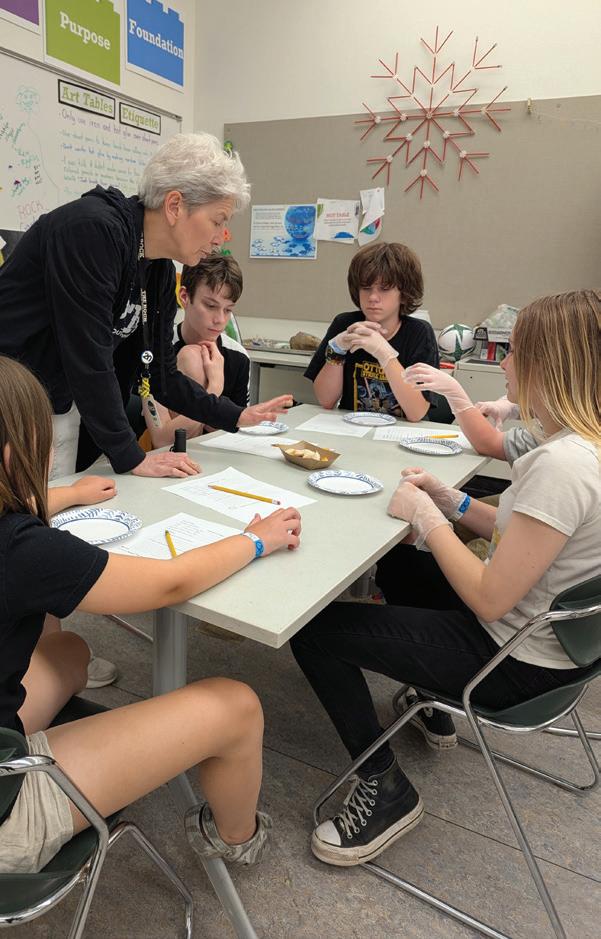


Bullock Creek art students paint a local mural
Students practice critical thinking at summer camp
Meridian student competes in motocross at the fair

MEANINGFUL MOMENTS How to Create
By MIKAL MIHELISH, SWLC
As the back-to-school routines begin, we can often get lost in the chaos of it all. Getting back in the swing of things and adapting to the new school year routine can be hard on everyone in the family. Parents and caregivers often find that it is hard to find balance between the busy of back-to-school season and still finding ways to connect with their children.
As humans, we all thrive on connection. Meaningful relationships are what help sustain our day-to-day life. Strong connections can help us feel supported, loved, and safe. As the summer ends, we tend to focus on buying school supplies, packing lunches, or first day of school outfits. Those things may be important, but we often forget to create time and effort into making meaningful moments and connections with our children during this busy time.
So, how can we do this? Below are listed a few helpful ways that parents and caregivers can create meaningful small moments and connections with their children.
Prioritize 30 minutes of uninterrupted one-on-one time with your child. Encourage your child to choose the activity. Give them your undivided attention. Avoid screens, distractions and multitasking during this time.
Within the first month of school, eat a “back to school” meal as a family. Each person shares their goals and worries for the upcoming school year.
Put the phone down. Electronics are very present in our lives, but it is important to spend time with your loved ones without the presence of electronic devices. Screen time can have a negative effect on communication skills and mental health (BayCare Pediatric).
Start a new dinner time tradition, such as each family member sharing one high and one low of their day. This can be a bonding experience and help us feel closer to each other.
Just like children, adults can have hard days too. Take care of yourself and recognize when you may need support. Taking care of yourself will help you be able to best connect with your children.
Use specific praise to boost your child’s confidence. Examples include: “That was really awesome when you helped your sister tie her shoelaces, you are such a great brother.” or “I really appreciated how you cleaned up your toys when you were done playing, you are such a great helper!”
Utilize car rides for conversations! Ask specific, open-ended questions like “what made you smile today?” or “what was your favorite thing that happened today?” to help the conversation flow. Let your child take the lead where the conversation goes next.
Go on a short 15-minute walk after dinner with your child. Enjoy some nice weather, conversation, and exercise together.
Write your child a sticky note of encouragement in their backpack or lunch box. A few simple words like “I am so proud of you!” or “I love you, have a great
day!” on a note can help children feel seen, loved, and appreciated.
Create a morning goodbye ritual with your child, such as a special handshake or hug. This can help early mornings and back to school transitions not feel as nerve racking or lonely.
Play a song everyone enjoys during the car ride to school in the morning. This helps to start the day positively with some good tunes, while also creating a positive experience for children.
Read a short book or a chapter together before bedtime. Establishing a consistent bedtime routine is beneficial for children and caregivers. Reading together is a wonderful way to create meaningful moments.
Have a game night. Games can be fun for everyone! Find a team game that everyone in the family can enjoy and play. Try to focus on the game, not who wins or loses.
Do a craft that can be tailored to your family’s interests. Doing crafts together can promote family bonding. Examples include painting rocks, a handprint family tree, or friendship bracelets.
Additionally, being a parent or caregiver can be challenging at times. Just like children, adults can have hard days too. Take care of yourself and recognize when you may need support. Taking care of yourself will help you be able to best connect with your children. Please remember, you matter too! As we enter this busy back-to-school season, make it a point to implement a few of the strategies listed above. Strong caregiver-child bonds are crucial to building positive childhood experiences. Healthy and positive relationships help create a sense of belonging and emotional stability for children. Small, meaningful moments are what helps make life so special. ■
OCCUPATIONAL THERAPY for Your Child’s Success
By AMBER IRVIN, CPS
A
s parents, we want the best for our children—whether it’s academic success, strong friendships, or the ability to navigate everyday life confidently and independently. But for many children, developmental, emotional, or physical challenges can make everyday activities more difficult. This is where occupational therapy (OT) can make a profound difference.
Occupational therapy isn’t just for adults recovering from injury. For children and teens, OT focuses on helping them build the essential skills they need to thrive at home, in school, and in the community.
WHAT IS OCCUPATIONAL THERAPY FOR CHILDREN AND TEENS?
In simple terms, occupational therapy helps people develop the skills they need to do the things that are important in their daily lives—or “occupations.” For children and youth, this means activities like playing, learning, getting dressed, using utensils, managing emotions, making friends, and becoming more independent.
Pediatric occupational therapists are trained to work with children from infancy through adolescence. They assess a child’s strengths and challenges, then use playbased and goal-oriented interventions to build important life skills.
COMMON REASONS CHILDREN MIGHT NEED OT
Children may benefit from OT for a variety of reasons, including:
• Developmental delays
• Autism spectrum disorder (ASD)
• Sensory processing challenges
• Attention-deficit/hyperactivity disorder (ADHD)
• Learning disabilities
• Fine or gross motor skill delays
• Physical disabilities or chronic health conditions
• Emotional or behavioral difficulties
If your child struggles with basic daily activities, coordination, focus, or social interactions, occupational therapy could be a valuable resource.
KEY BENEFITS
1. Improved Motor Skills for Everyday Tasks: Many children in OT work on improving their fine motor skills (like holding a pencil or buttoning a shirt) or gross motor skills (like balancing, running, or
climbing stairs). These are foundational for both school and self-care activities.
A child who struggles with handwriting, tying shoes, or using scissors may quickly fall behind or feel frustrated. Occupational therapists use fun, engaging exercises to strengthen coordination and build confidence. As skills improve, so does independence.
2. Support for Sensory Processing Challenges: Does your child seem overly sensitive to sounds, textures, or bright lights? Or perhaps they’re constantly seeking movement and stimulation? These could be signs of sensory processing difficulties, which are common in children with ASD or ADHD.
Occupational therapists use sensory integration therapy to help children better respond to sensory input. With the right support, children can learn to regulate their reactions, leading to fewer meltdowns and greater participation in daily life.
3. Improved Emotional Regulation and Behavior: Emotional regulation—knowing how to manage big feelings like anger, frustration, or anxiety—is critical for a child’s well-being. Many children who struggle in this area experience outbursts or shutdowns at home or school.
OT can teach children coping strategies, self-calming techniques, and problemsolving skills through structured play and routines. Over time, children learn how to better express their emotions and interact more positively with others.
4. Enhanced Focus and Organizational Skills: Children with ADHD or executive functioning challenges often have trouble starting tasks, staying on track, or managing time. These difficulties can affect academic performance and self-esteem.
Occupational therapists work with children to develop routines, visual schedules, and organization strategies that support learning and focus. These tools can be game-changers, helping children gain control over their daily responsibilities.
5. Greater Independence in Self-Care and Life Skills: From brushing teeth to packing a backpack, OT helps kids build the skills they need to be more independent at home and in the community. As they grow older, therapy may focus on preparing teens for adulthood with life skills like cooking, budgeting, or using public transportation. Independence isn’t just about convenience—
it’s about building a child’s confidence and sense of competence in the world.
6. Social Skills Development: Many children struggle with social interactions, whether it’s taking turns, understanding body language, or making and keeping friends. Occupational therapists use roleplaying, group activities, and structured games to help children practice appropriate social behavior in a safe environment.
Improved social skills often lead to better peer relationships, increased self-confidence, and a more positive school experience.
7. Parental Support and Involvement:
One of the most valuable aspects of occupational therapy is that it doesn’t happen in a vacuum. Therapists work closely with parents and caregivers, offering guidance, education, and strategies that can be used at home.
You’ll learn how to support your child’s development in daily routines, how to handle specific challenges, and how to celebrate progress—even the small wins.
HOW TO KNOW IF YOUR CHILD MIGHT BENEFIT FROM OT
As a parent, trust your instincts. If you’ve noticed that your child:
• Struggles with basic self-care tasks
• Is falling behind developmentally
• Has difficulty focusing or following instructions
• Avoids certain textures, foods, or environments
• Displays frequent frustration or emotional outbursts
• Has trouble with coordination or balance
• Is not reaching expected milestones for their age
…it may be time to speak with your pediatrician or request an occupational therapy evaluation.
Occupational therapy is more than just a clinical service—it’s a powerful tool for empowering children and supporting families. Whether your child needs help with motor skills, emotional regulation, sensory integration, or daily living activities, OT can provide personalized, meaningful support that helps your child thrive.
Understanding the benefits of occupational therapy can open doors to the support and resources your child needs to grow into a capable, confident, and independent individual. ■
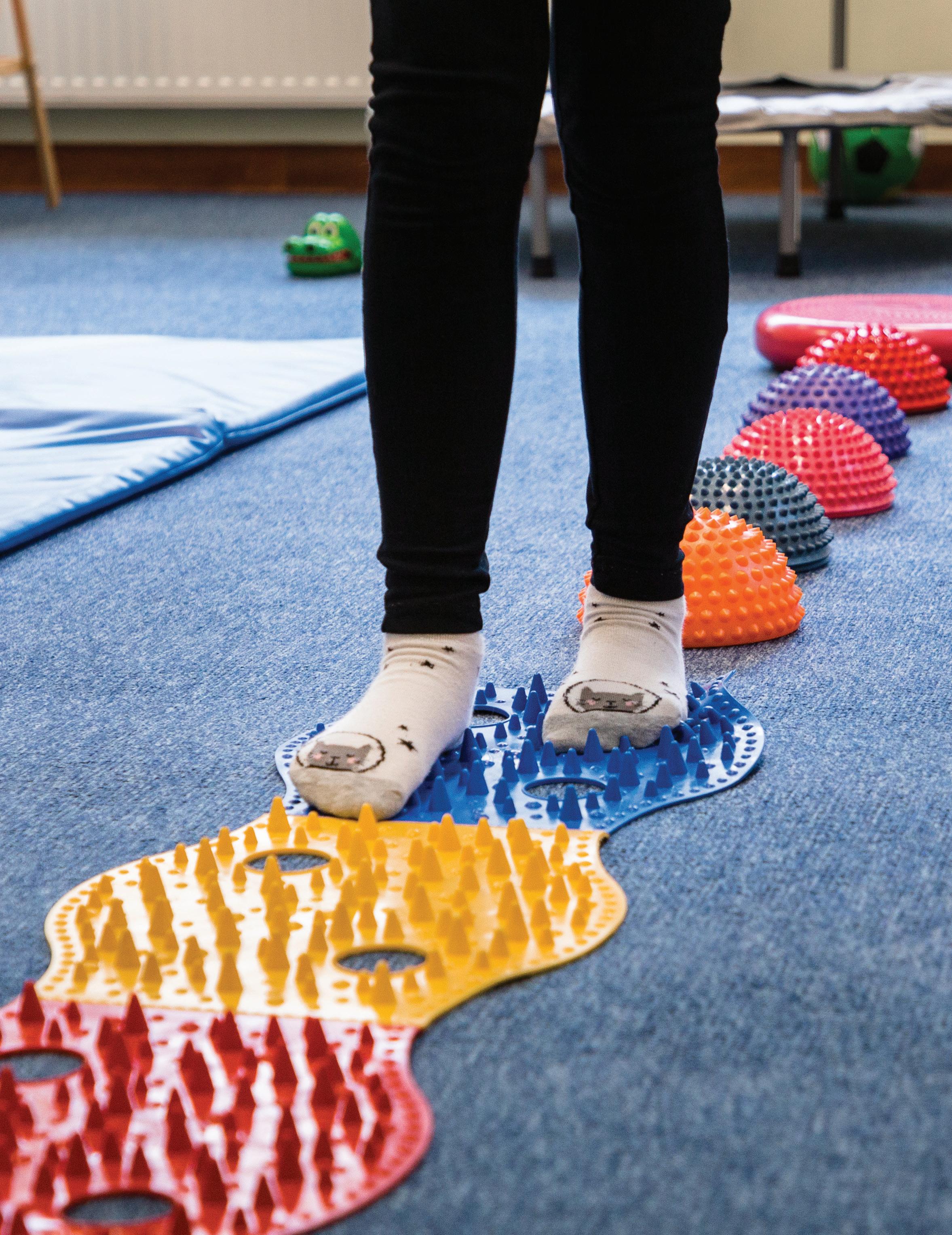
What are some good back-to-school tips?
Parents: Please pay attention to these very real challenges facing your child right now—not next year, not someday. These threats are already in your house, in your teens’ hands, and in their head.
1. TEXTING AND DRIVING Teens text and drive because they see adults text and drive. A lot of parents know their kids are doing it—but they gamble with the odds instead of stepping in. The truth is, while your teen is texting and driving, someone else’s teen might be texting right into you. Set the standard. Put down the phone.
2. SNAPCHAT & TIKTOK & INSTAGRAM These apps are not harmless fun. They are unfiltered, unmonitored, and specifically designed to reprogram your child’s values. Parents can’t see what’s happening—but I can. Teens are spending up to 15 hours a day absorbing content that promotes:
• Pornography
• Violence & bullying
• Drug culture
• Suicide normalization
This is NOT what you raised them for. And they’re getting far more Snapchat/TikTok/Instagram influence than they are from you. Just say NO to these harmful apps.
3. VAPING ADDICTION Vaping is the new epidemic, and yes—it’s an addiction, not a bad habit. An estimated 40% of high school students are vaping. Many kids are so addicted they can’t make it through a class without a hit. Parents, this will not be easy to fix. Vaping IS a gateway drug. Make this battle a priority before the addiction becomes permanent.
4. LACK OF RESPECT & ACCOUNTABILITY This one might hurt later—when your 18-year-old treats you like garbage. Disrespect isn’t strength. It’s a warning sign. If you’re teaching kids to argue with teachers, talk back to adults, and defy every rule— you’ll soon reap what you’ve sown. Respect and accountability = lifelong success. Teach them early. Enforce them often.
5. TECH AND SOCIAL MEDIA OVERLOAD Screens are robbing your kids of their drive, joy, and human connection. When they spend 10 hours a day online, what memories are they actually making? Not just kids—parents are addicted, too. Your child doesn’t need a perfect parent—they need a present one. Put down the phone. Make dinner together. Go outside. Tell stories. Screens don’t raise strong kids. You do.
These issues aren’t trending. They’re tragic. Don’t wait for the crisis to reach your doorstep. Step in, step up, and fight for your child’s future.
Happy Parenting, Officer Gomez
We cannot guarantee all questions will be published; however, we will do our best to respond to all questions submitted.

9
The number of brains an octopus has
2000
The number of years a volcano has been erupting (Mt. Stromboli in Italy)


30
The minutes of sleep a giraffe needs per night
30,000
The number of teeth a shark grows and loses in its lifetime

2
The number of countries that don’t sell Coca-Cola

142.18
The number of licks to get to the middle of a Tootsie Pop


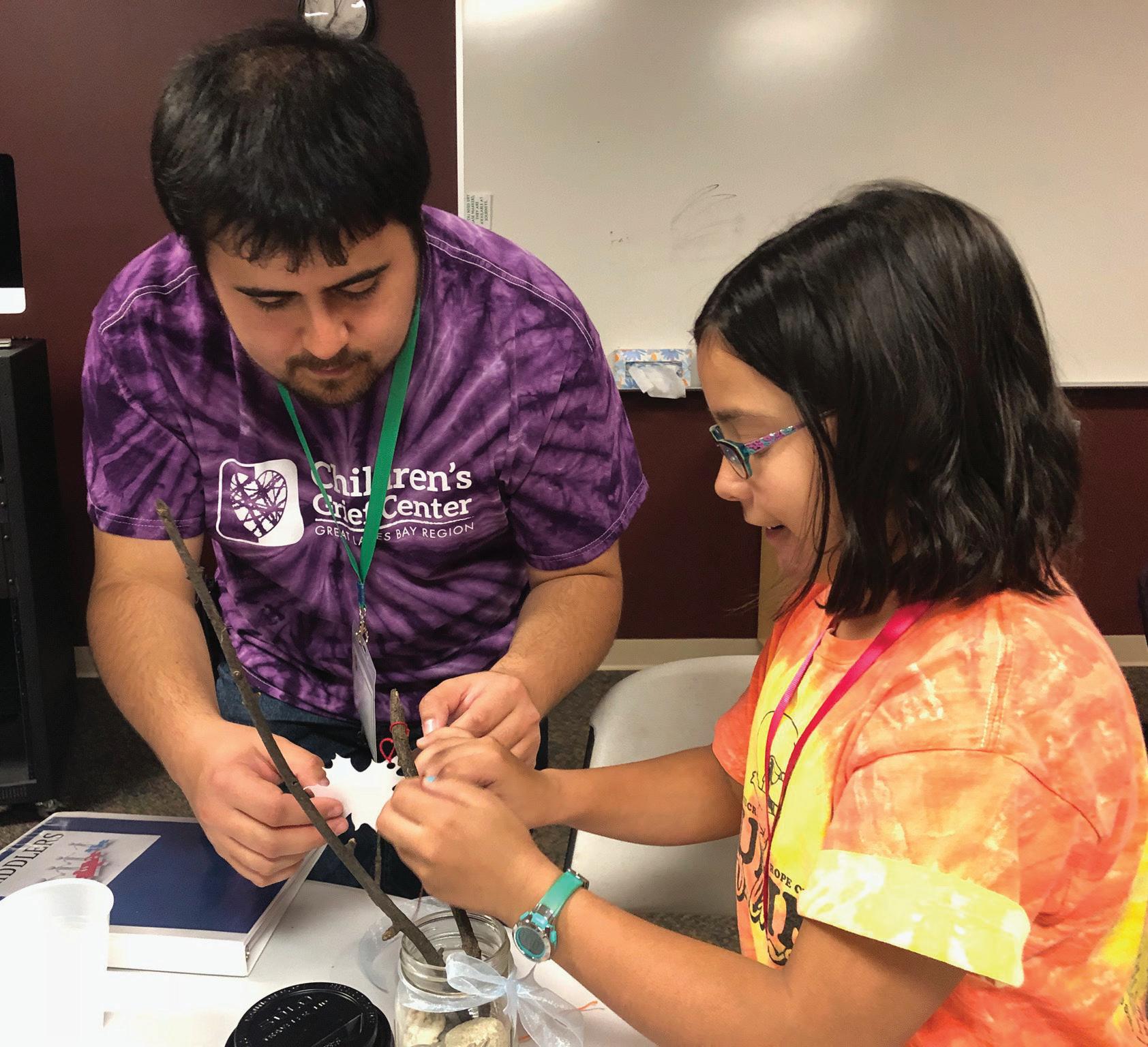


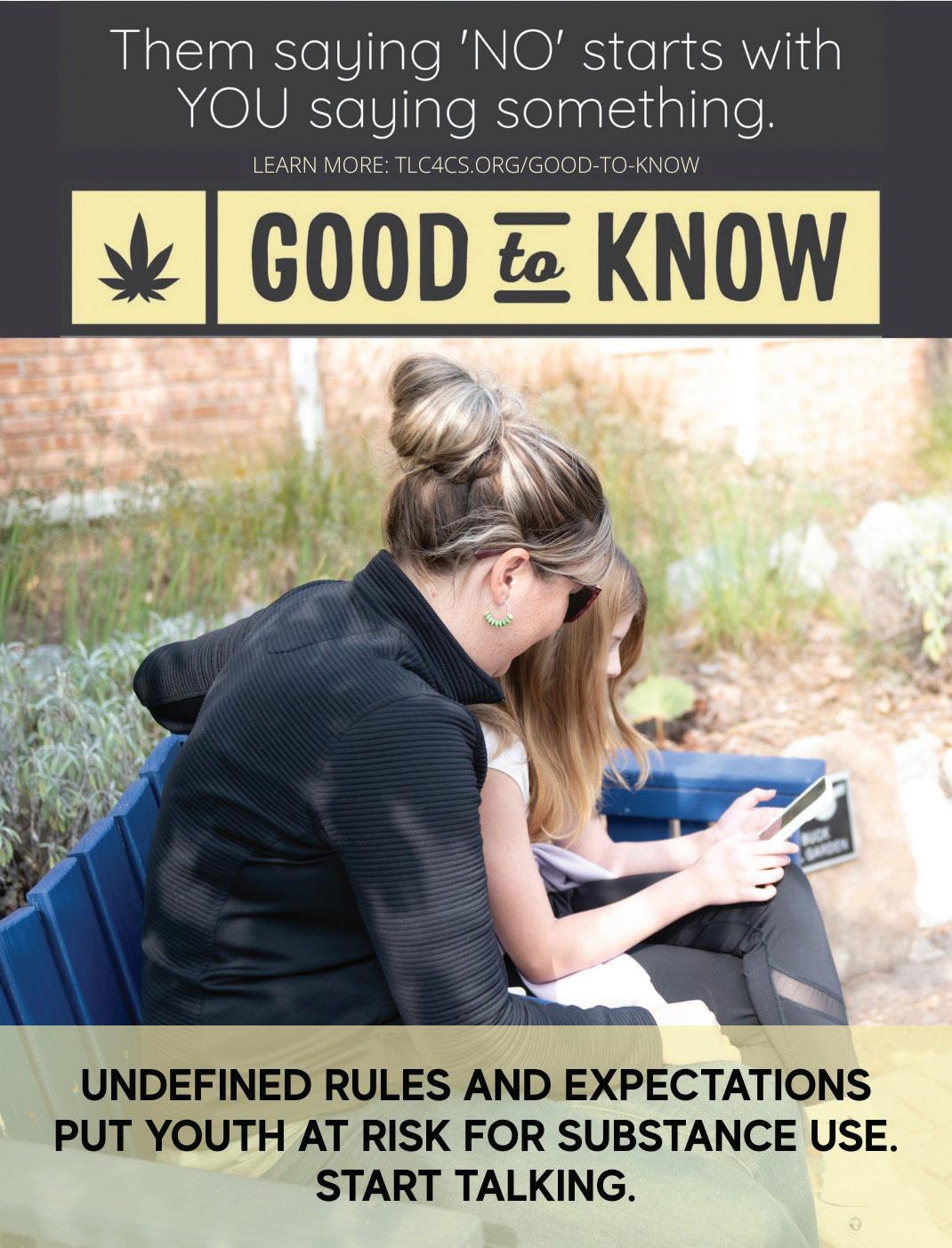


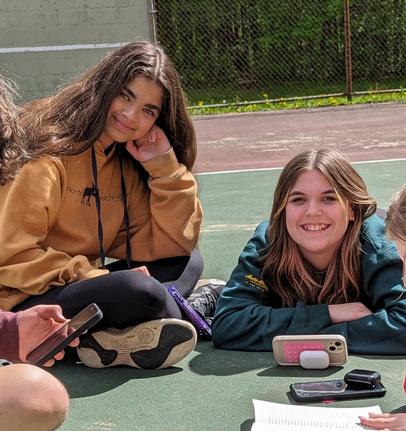
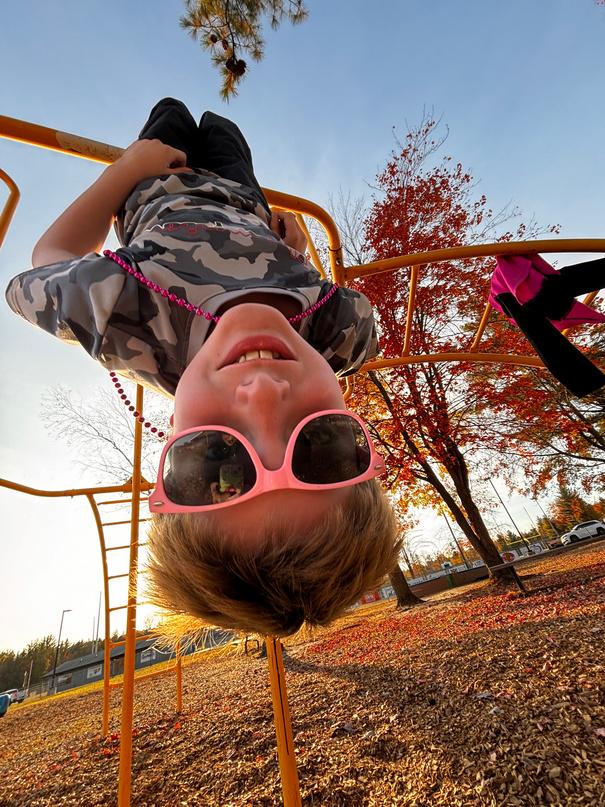



You Got Your Kid a Smart Phone/iPad, NOW WHAT?
By EMILY CHERKIN, M.ED.
Iget it. One day your kids are little, they go to bed at a reasonable time, and you feel like you can manage and monitor their screen use.
Then, suddenly, they are fifth graders, being invited to join group chats that are not only unwieldy but 99% asking “whose number is this?”, staying up until way later than you’d like, and using words like “skibidi toilet” and laughing hysterically while you blink in confusion.
Welcome to a club you may never have wanted or intended to join– the Club of Parents Who Thought They’d Say No to Screens Forever, But Suddenly, Here We Are.
I often joke that parenting is the judgiest sport I’ve ever played. It’s rough out there. We can be really mean to each other. But judgment doesn’t move us forward, and as cheesy as it sounds, we’re going to need each other a lot over the coming years.
When it comes to parenting, kids, and screens, I take a tech-intentional™ approach. In short:
• Less is more
• Later is better
• Relationships and skills before screens
You may note that being tech-intentional doesn’t mean saying “no screentime ever” or “your kids should never touch an iPad” or “all screens are evil.”
On the contrary– being tech-intentional means being discerning about the how/ what/when of screens, in the context of bigger real-life activities and relationships. Questions I’d much rather you think about are, “Does my child engage in after-school activities, like sports or arts or even just playing outside with friends?” and “Does my child find entertainment in non-screen ways too?” and “Do my child and I have a strong connected relationship?”
Because at some point, whether it’s in your house, on the school bus, in the classroom, or at a friend’s house, your child will encounter screens. Whether we like it or not, it’s pretty much impossible today to avoid QR code menus and pay-by-phone parking systems, flight check-in kiosks and grocery store self-pay stations. Screens are ubiquitous in our world.
I often joke that parenting is the judgiest sport I’ve ever played. It’s rough out there. We can be really mean to each other. But judgment doesn’t move us forward, and as cheesy as it sounds, we’re going to need each other a lot over the coming years.
Whether you caved and got your child a smartphone for Christmas, your elementary school student is the proud owner of a new iPad, or your 9th grader finally got the gaming console he always wanted– it’s done. Now what?
Let’s start by replacing judgment with curiosity. You’ve made a big decision, your child is probably beyond ecstatic, and you may have a lot of concern about What Comes Next. I have a few tips and recommendations for you to consider in how to best prepare yourself for what’s coming.
Here are five steps to get you started:
Establish right away that no devices sleep in the bedrooms. And yes, this does mean parental devices too. This is a highimpact, easy to implement rule that has net positive impacts on everyone in the family.
Focus on strengthening the relationship you have with your child, not a total number of minutes/hours per day. Honestly, the biggest fights families have around screen use is when kids can’t/won’t/ don’t stop using a screen when a parent asks them to. But that’s going to happen because the products are engineered to hook and hold their attention. It’s not a fair fight, and the only thing to get you through it will be a strong, trusting relationship with your child.
Do not rely on parental controls to monitor or manage screentime. That’s your job, even if that’s not fair or right. And yes, it’s exhausting, frustrating, and very difficult. The deck is stacked against you. I’ve written extensively about parental controls.
Set expectations for device use ahead of time. Going to a restaurant? Traveling? Visiting relatives? Riding the bus? Children need to be taught when it is okay and not okay to look at devices. Parents may need some revisiting of this themselves.
Understand child brain development. You don’t need to become neuroscientists, but you should know that a child’s brain is not an adult brain. They will not be able to self-manage screen use and screens will not regulate their nervous systems, in spite of what you read on social media. Teach them about their brains too and how design features make it hard to stop scrolling or playing.
Having a smart device is a big responsibility. It also comes with a significant amount of potential risks. Parenting in the digital age involves a lot of continuous learning, lots of conversations and teaching, and plenty of patience. You’re not just a parent, you’re a teacher. Whenever possible, find other parents to partner with on this. It makes your job so much easier when other parents delay smartphone access or limit social media or ensure their kids are participating in non-screen stuff too. It is hard to know what, exactly, makes a parent “successful” in navigating this digital age. Complete absolution from screens isn’t realistic, and unlimited scrolling isn’t good for anyone. I believe that those who will emerge most unscathed from these years will be the families where conversations about technology are abundant, where mistake-making is part of the learning experience, where understanding and support are the primary messages from parents, and where adults are comfortable asking annoying questions, paying attention to what their children are doing, and being Those Parents. (Because let’s be honest– our teens were never going to think we were cool anyway, so we might as well embrace it.) ■
“As The Screentime Consultant, Emily is at the vanguard of the fight for our children against the digitization, commodification, and gamification of childhood. Emily brings her expertise as a speaker and her experience as the lead plaintiff in her lawsuit against EdTech’s exploitation of children’s privacy. You can find more information about her advocacy and best selling book, The Screentime Solution at thescreentimeconsultant.com”


FEEL FREE The Dangers of
By STAFF


There is a product available at many gas stations, convenience stores, liquor stores, and online. It is called Feel Free. It is touted as an alternative to alcohol, but it has kava and/or kratom in it which has been found to be addictive. Kratom is a plant that carries opioid-like effects and is largely unregulated. Kava is also a plant-based depressant, not an opioid, but sometimes travels with drugs like opioids or alcohol. Kava is a depressant, while Kratom is a stimulant — which means they have opposite effects on the body. Health experts are raising concerns about its use. Users have shared experiences that include skin infections, seizures, and stints in rehab.
Pyramid Healthcare reports that although it’s labeled as a “natural” or

“wellness” product, kratom in particular is chemically addictive. It binds to the same brain receptors as opioids, and repeated use can lead to:
• Tolerance (needing more to feel the same effects)
• Physical dependence
• Withdrawal symptoms like anxiety, irritability, nausea and insomnia
Kava is not considered physically addictive, but long-term use has been linked to liver damage, especially when combined with alcohol or other substances.
Many users of Feel Free report needing multiple bottles per day to avoid feeling tired or irritable. This cycle of increasing use and dependency copies the patterns
seen in more traditional substance use disorders.
It has been reported that kids are so addicted that when they can’t get their “fix” they have resorted to crime to obtain it. Adults have reported being approached by kids outside convenience stores asking them to buy it because it’s age-restricted. That doesn’t seem to keep them from getting it, like any other substance.
Another concern is that it comes in a 2 oz bottle, but the serving size is half that. The label says that people should not drink more than 2 ounces within 24 hours, but those addicted are drinking multiple bottles a day.
Have a conversation with youth about the dangers of this product. ■
If you or someone you know is struggling with an alcohol, drug or other substance abuse problem, call the free and confidential helpline of the Substance Abuse and Mental Health Services Administration at 1-800-662-HELP (1-800-662-4357), or visit findtreatment.gov.
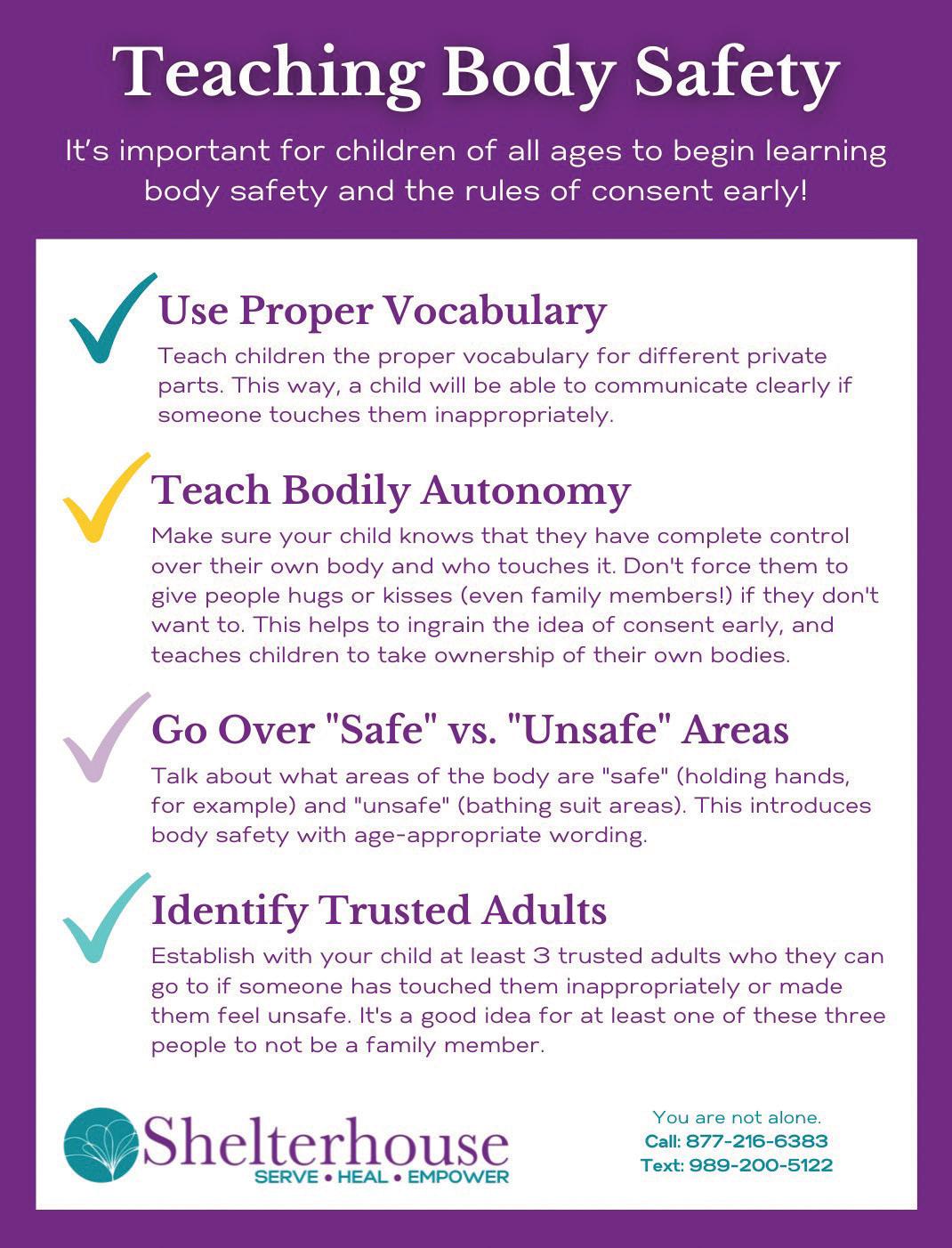



Open toAll JOIN


Everyone can join!
At Dow Credit Union, our 80,000+ members are also owners who share in our success. Last year, we returned over $18 million to our members, reinforcing our commitment to their financial well-being. Becoming a member also means becoming a multiplier for good. We proudly support the communities we serve through volunteerism and partnerships with non-profits dedicated to helping those who need it most.
Go-To Place for Adolescent Mental Health Care

MyMichigan Health has launched a new therapeutic Intensive Outpatient Program in Midland for middle and high schoolers to address their mental health needs. This grant-funded program, made possible by the Michigan Health Endowment Fund, fills a critical gap in local behavioral health services for youth in the region. The program offers evidence-based group, individual and family therapy for adolescents struggling with issues such as anxiety, depression, trauma, school issues, relationship or family stress. By offering structured therapeutic sessions after school, participants return to their home environment in the evening. The program aims to stabilize clinical conditions, reduce symptoms and prevent inpatient hospitalizations, offering necessary treatment for those who cannot be effectively treated in a less intensive setting.
To learn more about the Adolescent Intensive Outpatient Program visit mymichigan.org/iop or call (989) 839-3385
